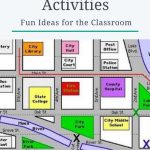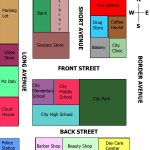Are you looking for some fun, engaging sentences structure games and activities for ESL? Yes? Then keep on reading because we’re going to give you the rundown on our top sentence games to try out with your students today.

Sentence Games and Activities
Let’s get into the best sentence making games and activities to consider trying out with your students. Keep on reading for the top sentence builders activities!
ESL Sentence Structure Games and Activities
Are you ready for some of the best complete sentences games and activities out there? Then let’s get to it! Here are the best 20 picks for sentences ESL games and activities.
#1 Sentences Writing Game: Is that Sentence Correct?
One of the best activities for working on sentence structure is this one: Is that sentence correct? The way it works is that you have a bunch of sentences on a worksheet or on the whiteboard. Students have to work together in pairs to decide if the sentence is correct, or not. If not, they have to write down the correct form.
For example, if you’re teaching about regular and irregular verbs in the past, you could focus your errors on those things. Don’t forget to include questions and negative forms too. Or, you may want to make sure your students know how to use modal verbs or was and were.
This makes an excellent grammar review or warmer activity, so try it out with your students today. More details here: Is that Sentence Correct?
#2: Flashcard Sentences
I seriously think that flashcards are one of the most under-utilized teaching tools out there! They are so versatile and can be used for a ton of activities, but one area they shine at is helping students with sentence structure. You can easily make this into a game, but the gist of it is that you show students a card and they have make a simple sentence with it.
Or, you can show two cards and students have to use a conjunction. Another application is to show a single item, or a group of items and have students use a quantifier (some/any/much, many, etc.)
Find out more here about this making sentences activity: Using Flashcards in the Classroom.
#3 Sentence Structure Game: Dictogloss
This is a classic ESL activity that gets students making lots of complete sentences. For example, you may want to focus on linking verbs. The way it works is that you read out a dialogue and students have to do their best to recreate what they heard. You can put them in groups of 2-3 and they can work together on it.
The number of times and the speed at which you read the dialogue depends on the level of the students. If you want to try it out, you can learn more here: Dictogloss ESL Writing Activity.
- Amazon Kindle Edition
- Bolen, Jackie (Author)
- English (Publication Language)
- 87 Pages - 10/24/2019 (Publication Date)
#4: ESL Surveys (a Making Sentences Game)
I LOVE to use surveys in my classes. Just ask my students and they’ll probably tell you all about it! They cover a range of skills and are adaptable to just about any topic, grammatical point or vocabulary.
If your ESL students need help with writing a sentence, this is one way to get them to do it. Instead of giving them complete sentences for the questions, leave a number of blanks and they can make their own survey. It’s a fun way for them to personalize the language and talk to their classmates about what’s most interesting to them.
Do you want to know more about one of the best sentence builders activities? Check it out here: ESL Surveys.
#5: ESL Board Games
Try out one of my favourite making sentences games.
#6 Simple Sentence Game: Mixed up Sentences
This is a quick, easy review game or warm-up that helps students make simple sentences for themselves. The way it works is that you have a number of mixed up sentences in terms of word order. Then, students have to write out the correct sentence structure and order.
It’s ideal for working on a number of grammar point, but one in particular is subject verb agreement, particularly if your students are from a place like Korea where the verbs go at the end of a sentence instead of the beginning. Or, you could highlight something like compound nouns.
You can do this as an activity, or bring a little bit of competition to it and make it into a race. Learn more about it here: Mixed up Sentences.

Sentence making games and activities
#7 ESL Sentence Game: A to Z
If you want to have some fun with your students and get them to make a bunch of sentences, then you’ll want to try out this A-Z Alphabet game. It’s a simple sentence game that requires almost nothing in the way of materials and basically no preparation. The way it works is that you put students into pairs and they have to write the alphabet on a piece of paper.
Then, in the allotted time, they try to make a sentence starting with each letter. I usually make a rule that proper names are not allowed for the first letter. For example:
A= All the kids went to school.
B= Both my mom and dad love pizza.
C= Cats don’t like water.
Add up the number of correct sentences at the end of the activity and the team with the most is the winner. More information here: A-Z Alphabet Game.
- Amazon Kindle Edition
- Bolen, Jackie (Author)
- English (Publication Language)
- 87 Pages - 10/24/2019 (Publication Date)
#8: Hot Potato Game
If you want to create some fun and excitement in your classes, then you’re going to need to try out Hot Potato. The students have to pass around a “potato” and when the timer goes off, you can show a flashcard to the student who is holding it. They have to make a sentence, and if correct, get to continue playing the game.
You can find out more about using Hot Potato in your ESL classes here: Hot Potato Game.
#9: Making a Sentence Whiteboard Games and Activities
I don’t know what it is, but students love to write on the whiteboard, kids, teens and adults. Maybe it’s the novelty factor of it? Whatever the case, it’s fun to mix things up in the classroom a little bit and have the students write on the board.
In this case, you’ll want to use something like a sentence correction game or relay race of some sort. If you want to see some ideas for how to make this happen, you’ll want to check out the following: ESL Whiteboard Games.
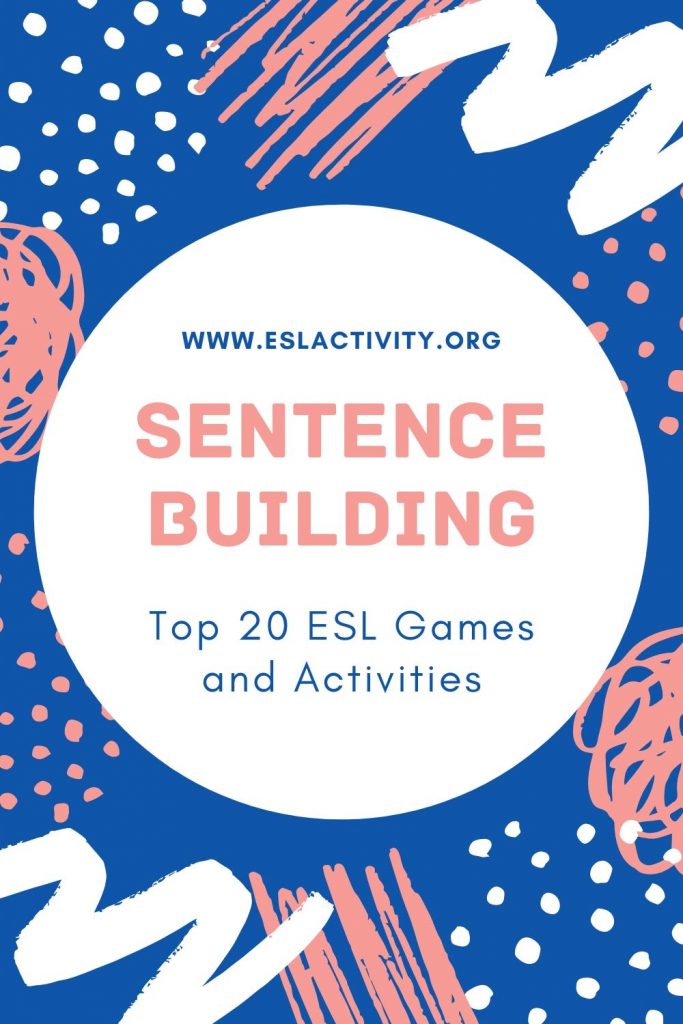
Sentence building games and activities
#10 Sentence Writing Games: Error Correction Relay Race
This game turns the old (error correction at the sentence level) into something new (a relay race) and fun. The way it works is that you have a a few sentences with errors, for example with the passive voice. The students have to work together in teams to correct things like sentence structure, spelling and punctuation to make the correct sentences.
Do you want to try it out with your students? It’s one of the best sentence structure games for middle school. You can learn more here: Error Correction Relay.
#11 ESL Sentence Structure Activity: Conjunctions and Transitions
When your students are practicing making complex and compound sentences, a lesson on conjunctions and transitions can be extremely useful. They’re kind of like the building blocks of these more complicated sentence, except that students often forget to use them.
#12: Sentence Structure Song and Chants
The good news for English teachers is that there are a ton of songs and chants on YouTube to help our students out with English sentence structure, including how to use phrasal verbs in them. Have a look on YouTube to find a good song for just about any age or level of student.
#13: The Memory Circle
A nice way to review sentence structure is to play this memory game. It worked for just about anything but in particular, try it out with the simple past forms. Check out this video for more details on one of my favourite making sentences ESL games:
#14: Future Forms in English
With regards to sentence structure, some of the future forms in English can be a little bit tricky. Then, add into the mix when and how to use them in each specific situation and it’s clear that our students need a lot of practice with them! Help your students out with some of these top ideas:
#15: Subject/Verb Agreement ESL Activities
Subject verb agreement is one of the key concepts for our students to master if they have any hope of becoming proficient at English and making correct sentences! Even more advanced students make mistakes with this, but it’s extremely important!
That’s why it’s ideal if we can give our students a ton of practice with subject and verb agreement in our classes. Here are some of the best ideas for how to do this: Subject/Verb Agreement ESL Activities.
#16: Include Some Sentence Writing in Classes
Sometimes I think that students never really lock down correct sentence structure because we’re so focused on speaking and communicative activities. However, it’s hard to correct errors if you have more than 3-4 students.
That’s where some writing practice can come in. Students can take what they’ve learned in your classes and actually write it down on a piece of paper! This allows the teacher to see exactly where students are making mistakes with regards to sentence structure and offer some corrections.
Do you want to include some more writing into your classes but aren’t sure how? You’ll want to check this out: English Writing Tips.
#17: English Sentences Structure Games
You’ll certainly want to check out this video for more ideas for helping your ESL/EFL students with sentence building:
#18: Dictation Writing Practice to Work on Sentences Structure
Another way that you can review sentence structure with your English learners is to try out this dictation activity. The way it works is that you read sentences or an entire passage to your students and they have to write down what they hear. In this case, you’d want to target the sentence structures you were teaching your students.
Want to know more about this activity that’s ideal for writing, listening, spelling, punctuation, grammar, sentence structure, vocabulary and more? You can find out the details here about one of the best sentence writing activities: Dictation ESL Writing and Listening Practice.
#19: Chain Spelling Activity
If you’re teaching your students how to read then you may want to consider playing this spelling game. The way it works is that all the students stand up. Then, you say a word and students take turns spelling it out letter by letter. If someone doesn’t get the correct letter, they are “out.”
- Amazon Kindle Edition
- Bolen, Jackie (Author)
- English (Publication Language)
- 137 Pages - 09/27/2020 (Publication Date)
#20: Proof-Reading and Editing
Proofreading and editing are extremely important writing skills for our students to master but they often don’t practice it enough in order to become proficient at it. In this case, you’ll want to make a paragraph or two (upper-level students) or just a few sentences (lower-level students) that have some sentences structure errors in them.
Perhaps the word order is wrong. Or, the subject and verb don’t agree. This will heavily depend on the level of your students and what you’ve been focusing on in class. If you want to learn more about how to do this activity with your students, check this out:
ESL Proof-Reading and Editing Activity.
#21: Dialogue Substitution
This is a nice sentence builder activity to try out.
#22: ESL Grammar Activities and Games to Focus on Sentences Structure
Good English grammar always involves good sentence structure! They go hand in hand and that’s why I generally always require that my students make full sentences for almost every single thing that they say or write.
The good news is that teaching grammar doesn’t have to be boring. There are a number of options to consider here: ESL Grammar Activities.
#23: There is/There are
A key grammatical structure that any English learner needs to master is there is/there are. Have a look here for some of my ideas for helping students master this: There Is There Are ESL.
#24: Fill in the Blank Games
A nice way to focus on sentence structure for beginners is to use some fill-in-the-blank games. Here are some of my top options: Fill in the Blank Games.
#25: Running Dictation
Check out this complete sentences game that’s ideal for all ages.
#26: Sentence Building Blocks
Create sentence-building blocks with different parts of speech written on them (nouns, verbs, adjectives, etc.). Each student picks a block and has to use it to construct a sentence. They can take turns adding blocks to create longer and more complex sentences. This game helps students practice sentence structure and expand their vocabulary.
#27: Sentence Auction
Prepare sentence cards with various sentence structures written on them (e.g., simple, compound, complex). Each student is given a set amount of “money” (paper or plastic coins). The teacher acts as an auctioneer, and students bid on the sentence cards they want to own. The highest bidder explains the sentence structure and constructs a sentence using that structure to earn points. This game reinforces sentence structure knowledge and encourages active participation.
#28: Sentence Building Dice
Create dice with different sentence components on each side (subject, verb, object, adverb, etc.). Students roll the dice and have to construct a grammatically correct sentence using the components that appear. This game encourages creativity and helps students practice sentence structure and word combinations.
#29: Sentence Relay Race
Divide students into teams. Provide each team with a sentence on a piece of paper. One student from each team runs to the board, writes a word or phrase to complete the sentence, and returns to tag the next student. The process continues until all the sentences are complete. Teams then read out their sentences, and the most accurate and coherent sentences win. Its a nice sentence structure game for middle school students.
#30: Sentence Detective
Provide students with a set of mixed-up words that form a sentence when arranged correctly. Students need to unscramble the words and reconstruct the sentence. The first student or team to correctly solve the puzzle wins. This game helps students practice sentence structure, word order, and critical thinking.
#31: Sentence Game For Adults
One fun sentence game for adults is “Fortunately, Unfortunately.” Here’s how it works:
- Players sit in a circle.
- The first player starts with a positive statement about something that happened (e.g., “Fortunately, I found a $100 bill on the street.”).
- The next player follows with a negative statement related to the previous statement (e.g., “Unfortunately, it turned out to be fake money.”).
- Play continues with each player alternating between “fortunately” and “unfortunately” statements, building on the story.
- The game continues until everyone has had a turn or until the group decides to end the game.
This game encourages creativity and storytelling while also being light-hearted and entertaining.
Sentence Structure FAQs
There are a number of important questions that people have about teaching students to make complete sentences. Here are the answers to some of the most common ones.
How Can Students Improve their Sentence Structure?
There are a number of ways that students can improve their sentence structure:
- Practice makes perfect
- Looking at sample sentences
- Feedback from a teacher
- Extensive reading
- Taking a writing course
ESL Sentence Structure: How do you Correct Sentence Structure?
If you want to correct sentence structure for your students, here are some of the key things to take a look at:
- Make sure information within the sentence is clear and you can understand the key point
- See if there are transitional words
- Pay close attention to subordinate clauses
- Use the active voice as well as active verbs
- Follow correct grammar rules and conventions
How do you know if it’s a Complete Sentence?
You can know if it’s a complete sentence if:
- It begins with a capital letter
- It ends with some punctuation of some kind (period, question mark, exclamation mark)
- The sentence contains at least one main clause with a subject and verb, at minimum.
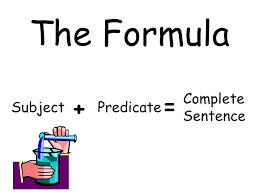
What is a complete sentence?
How do you Write a Powerful Sentence?
- Less is more so trim the unnecessary parts of your sentence that are not getting the points across
- Stronger words belong at the beginning or end, not in the middle
- Get to the point quickly
- Avoid fluff and fillers
- Don’t use the passive voice
- Choose more powerful and active verbs
- Use words to create an image
- Create suspense when appropriate
ESL Sentence Structure: Should my Students Write Complete Sentences Only?
A common question that teachers have when they see a list of these complete sentences games is whether or not this is necessary. After all, when we talk, we rarely speak in full sentences to each other, but instead use fragments.
To each their own, but my view is that it’s vital that we teach our students, especially beginners to speak and write in complete sentences. If you don’t, it’s likely that students will never actually learn the correct grammar for most sentences because repetition is the key to language learning.
ESL sentence structure can be a little bit tricky, especially for students from certain countries, so give them as much practice as possible!
At the more advanced level, I’ll often let is slide for simple things and casual conversation, but for more complex sentences that we’re focusing on in class? Definitely not and I’ll still require my students to make full sentences. That’s where these complete sentence games can come in so handy!
What is ESL Basic Sentence Structure?
Do you or your students need a little primer on basic sentence structure? Here are some simple sentences to take a look at:
Subject-Verb
Jack eats.
The girl plays.
Subject-Verb-Object
Jack eats pizza
The girl plays soccer.
Subject-Verb-Adjective
The girl is tall.
I am happy.
Subject-Verb-Noun
I am a musician
Jack is a student.
Did you like these Sentences Structure Games?
- Bolen, Jackie (Author)
- English (Publication Language)
- 186 Pages - 03/10/2016 (Publication Date) - CreateSpace Independent Publishing Platform (Publisher)
Yes? You liked these sentence building games? Thought so! If you loved these sentences games, then you’re going to love this book over on Amazon: 101 ESL Activities. The key to better English classes is a wide variety of interesting, engaging activities and this book will help you get there. There’s enough material to make it through an entire semester in style!
The best part is that the book is well-organized into various sections so you should have no problem finding what you’re looking for in just a minute or two. If that’s not some ESL teaching awesome, then I’m not sure what is.
You can get the book in a couple different formats. Take the e-version with you to your favourite coffee shop for lesson planning on the go. Or, keep a copy on the bookshelf in your office to use as a handy reference guide.
Does it sound like what you need to take your lesson planning to the next level? It most certainly is, so check out the book for yourself on Amazon. There are a ton of activities you can use to work on sentences structure:
Sentences Structure Worksheets
Are you looking for some sentence building worksheets to help your students out with this important writing and speaking skill? Here are some of our go-to resources for this:
Sentences Structure Lesson Plans
Do you want to know more about teaching sentence structure in ESL? These games, activities, and worksheets are a great place to start. But, you may also want to consider trying out some of these sentence building lesson plans.
Tips for Teaching Sentence Structure to English Learners?
Teaching sentence structure to ESL learners is crucial for developing their overall proficiency in English. Here are some tips to effectively teach sentence structure:
Start with simple sentence patterns
Begin by introducing and practicing basic sentence structures, such as subject-verb-object (SVO) or subject-verb (SV). Teach students to identify the core elements of a sentence and understand their roles. Of course, emphasize complete sentences over single word questions and answers.
Use visual aids
Incorporate visual aids, such as diagrams or charts, to help students visualize sentence structures. Display examples of different sentence patterns and highlight the placement of subjects, verbs, and objects. This visual reinforcement can enhance comprehension.
Provide clear explanations and examples
Clearly explain the rules and patterns of sentence structure, using simple language and providing clear examples. Break down complex concepts into smaller, manageable parts to facilitate understanding.
Practice with sentence manipulation
Engage students in activities that involve manipulating sentence structures. For example, provide sentence fragments or jumbled words and have students rearrange them to form grammatically correct sentences. This hands-on approach reinforces sentence structure concepts.
Scaffolded exercises
Progressively increase the difficulty of sentence structure exercises to gradually challenge learners. Start with simple sentence construction and gradually introduce more complex sentence patterns, such as compound or complex sentences.
Model and encourage sentence expansion
Teach students to expand their sentences by adding adjectives, adverbs, prepositional phrases, or dependent clauses. Provide models and encourage them to incorporate these elements to create more complex and descriptive sentences.
Provide ample opportunities for practice
Offer a variety of practice activities, such as sentence completion exercises, sentence combining exercises, and guided writing tasks. Incorporate both written and spoken activities to reinforce sentence structure skills in different contexts.
Analyze authentic texts
Use authentic texts, such as stories, articles, or poems, to analyze sentence structures. Ask students to identify different sentence patterns and discuss how sentence structure contributes to meaning and style.
Error correction and feedback
Provide targeted feedback and correction when students make errors in sentence structure. Encourage self-correction by asking students to identify and correct their own mistakes. Use error analysis as a teaching tool to address common errors and reinforce proper sentence structure.
Encourage creativity
While focusing on sentence structure, also foster creativity and encourage students to experiment with different sentence patterns and styles. Provide opportunities for them to express themselves using varied sentence structures and encourage them to explore different ways to convey meaning.
Have your say about these Sentence Making Games
What are your thoughts about these sentence games for ESL/EFL students? Did you try out one of them from the list, or do you have another recommendation for a sentence structure activity? Leave a comment below and let us know what you think. We’d love to hear from you.
Also be sure to give this article a share on Facebook, Pinterest, or Twitter. It’ll help other busy English teachers, like yourself find this useful resource for sentence-building games and activities.
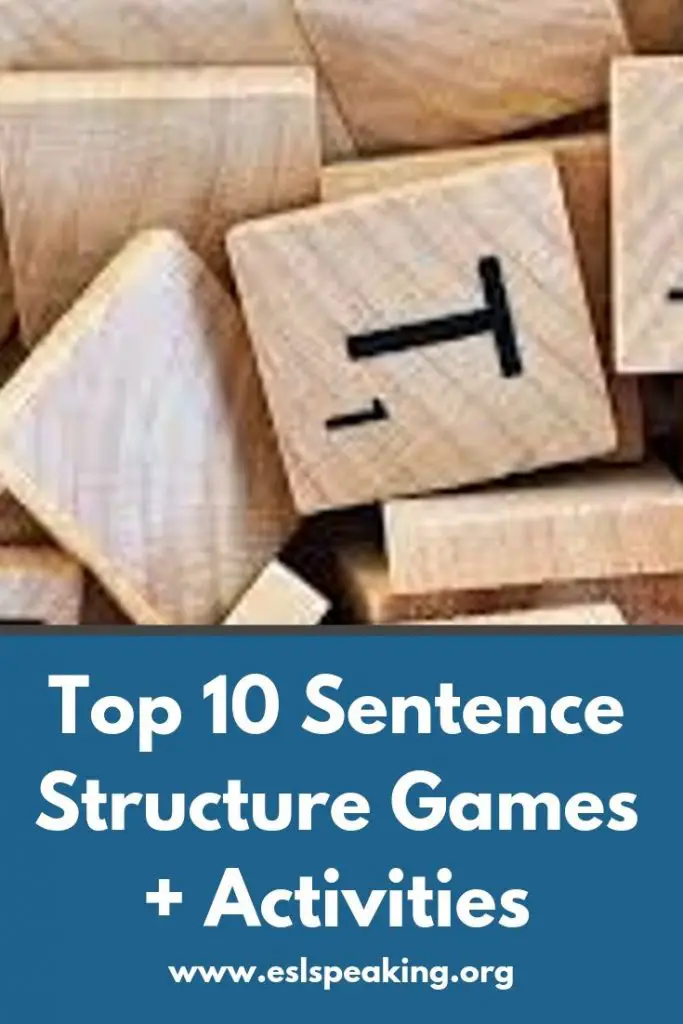
Top 10 Simple Sentence Games
Last update on 2022-07-17 / Affiliate links / Images from Amazon Product Advertising API






